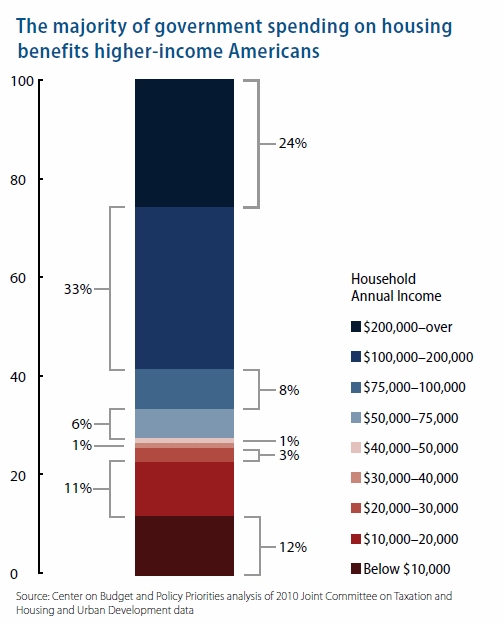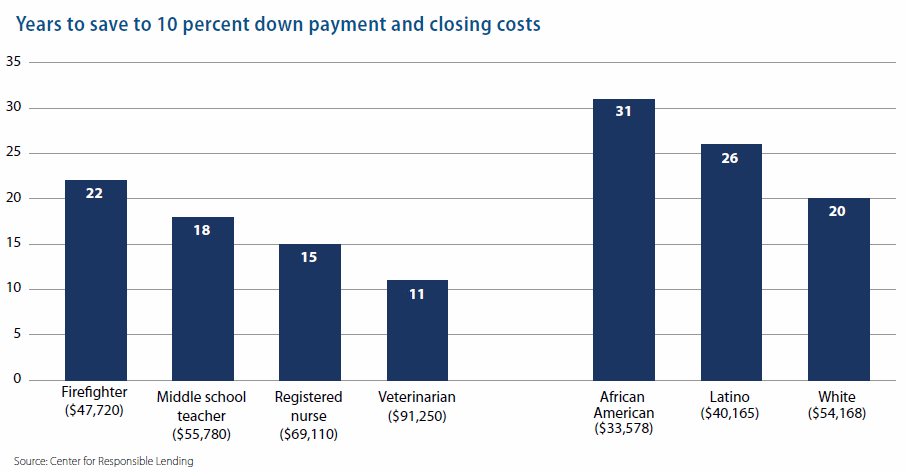Blog

Credit Access For Less Secure Borrowers Central to Housing Finance Reform
ThernCenter for American Progress (CAP) and the National Council of LarnRaza have released a paper, Makingrnthe Mortgage Market Work for American’s Families, whichrnevaluates some of the problems facing the current mortgage market andrnpresents challenges for its reform. The paper also presents a couplernof concrete suggestions for reform including creations of a MarketrnAccess Fund to provide credit enhancement and supportive services tornunderserved but creditworthy populations and a framework forrnevaluating participants in an eventual new secondary market. </p
Wernare summarizing the paper’s assertions in two parts. This initial article dealsrnwith an overview of current market challenges and the need for<bincreased access and affordability and the secondary market’s role inrnsupporting this access and affordability. Part Two will look at thernconnection of rental-housing to the secondary market and CAP’srnsuggestions for a Market Access Fund and a suggested model forrnevaluating the secondary market. </p
<bCurrent Market Challenges; The Need For Increased Access and Affordability </p
America’srnhousing-finance system is at a decision point. We can chose tornrestructure it to restore balance to the housing market and providerncredit to a broad and diverse population, or we can live with arnsystem in which credit and housing choices are more costly, morernlimited, and less sustainable, especially for minority and low- andrnmoderate-income households. </p
ThernUnited States has a long history of unequal access to sustainable,rnaffordable mortgages, particularly for minority and low- andrnmoderate-income communities. Government programs such as the mortgagerninterest deduction disproportionately help those who least need itrnand creditworthy borrowers often have difficulty obtaining highrnquality mortgages. In the run-up to the housing crisis in 2007 manyrnborrowers found themselves in “credit deserts” that left them fewrnchoices beyond subprime lending. </p
 </p
</p
Lackrnof equal access to mortgage credit can be explained by a variety ofrnfactors, including not only traditional discrimination but also thernfailure of mortgage lenders to serve geographies and populations thatrnthey may see as less lucrative (known as market creaming). </p
WhilernCongress has tried to level the playing field – through the FairrnHousing and Equal Credit Opportunity Acts and other laws, minoritiesrncontinue to have trouble accessing safe and sustainable mortgagerncredit. Additionally, different communities or borrowers haverngenerally been served by different financial institutions and as arnresult face higher costs of borrowing and are more likely to berndenied loans. </p
Whilernthe 2012 homeownership rate for whites was 73.6 percent, Hispanic andrnAfrica American rates were 46.5 and 44.1 percent respectively. Theserndifferences significantly contribute to the dramatic wealthrndisparities between whites and minorities. The Urban Institute foundrnin 2010 the average white family had six times the wealth ($632,000)rnas the average black family ($98,000) or Hispanic family ($110,000)rnand that lower homeownership rates and falling home prices were thernkey drivers of the gap. For this reason, it is critical to redesignrnthe system to account for shifting demographics and changing consumerrnprofiles, including the rapid growth of communities of color,rndecreased economic security, and increasing demand among ruralrnAmericans.</p
ThernHarvard Joint Center for Housing Studies projects that communities ofrncolor will account for more than 70 percent of new household growth</bbetween 2010 and 2020. Given the relatively low rates ofrnhomeownership among these communities, this demographic shift createsrntremendous opportunity for lenders to expand into new markets. </p
Futurernborrowers are likely to be less economically secure and will alsornincreasingly be low-wealth borrowers so the size of a requiredrndownpayment will be a crucial issue. Large downpayments are alreadyrna significant barrier to homeownership. Even with a 10 percentrnrequirement it would take 20 years for the average family to save forrna downpayment plus closing costs. </p
 </p
</p
Morernfuture homeowners will live in rural areas where homeownership ratesrnare already higher but residents still have few choices for accessingrnmortgage credit. In 2010 approximately 8.7 percent of ruralrnoriginations were classified as high cost loans compared to 3.8rnpercent in the nation as a whole.</p
Thernnations housing-finance system needs to serve all of thesernpopulations and while these potential customers present somernchallenges, they also present tremendous opportunities for lenders tornexpand into new markets and threaten to make irrelevant those whorndon’t.</p
Amongrnthese underserved populations are many people with the capacity to bernsuccessful homeowners. A recent study looked at these ostensiblyrnrisky populations who took out loans in 2010 and found that, despiterntheir risk profile and the economic turmoil, these loans performedrnwell with a serious delinquency rate 60 percent of the prime ARMrnportfolio and less than half that of subprime FRM. </p
Thernstudy attributed this success not so much to the borrowers but tornthe mortgage product itself. The lenders helped these nontraditionalrnborrowers buy homes they could afford with mortgages they couldrnmanage. These success stories exist throughout the country.</p
Anotherrnobstacle to increasing access to affordable home ownership is “marketrncreaming,” the market’s tendency to give preference to servingrnthose perceived to be the easiest, most lucrative, or least riskyrnborrowers – the so-called cream of the crop. Left to its ownrndevices the market will tend to deliver the best loans where it isrneasiest to do so and to channel higher-cost loans where borrowers have fewer options.</p
FederalrnReserve Chairman Ben Bernanke has suggested that the pendulum onrnlending standards has swung too far the other way and that overlyrntight lending standards may now be preventing creditworthy borrowersrnfrom buying homes and slowing the housing and thus the economicrnrecovery. Bernanke said because there are no incentives to loosenrnlending standards, lenders are unlikely to do so anytime soon.</p
Unlessrnpolicymakers reshape the incentive structure, the housing industry isrnlikely to continue to chase the most lucrative loans at the expensernof safe affordable homeownership opportunities for a wider spectrumrnof borrowers.</p
ThernSecondary Market’s Role in Promoting Access and Affordability</p
Mostrnpeople think of mortgage lenders as the point of intersection withrnthe public. However the very large secondary mortgage market plays a<bcritical role in ensuring access and affordability. Lenders preferrnto make the types of mortgage loans that the secondary market willrnbuy and so one of the most effective ways to ensure a broad,rnaccessible, and affordable primary mortgage market is by creating arnsecondary market that promotes these same principles.</p
Unlikernindividual lenders with their constrained resources, the secondaryrnmarket can quickly and effectively pilot new concepts and can takerninnovations emerging from the primary market and standardize them tornreach a larger market and can quickly establish such a new product</bmarket. </p
Thernsecondary market’s policies regarding underwriting practices,rndocumentation, risk-capital reserves, and repurchase requirementsrninfluence the behavior of the primary market and the secondary marketrncan ensure credit is extended in a responsible way byrnwell-capitalized entities. It is in an ideal position to monitor andrncounteract the primary market’s tendency to service a narrower slicernof the market through outreach, pricing, and counterparty management.rn Equally important, the secondary market can affirm and uphold thernprinciples of fair and equitable access to credit. </p
Tornachieve an optimal balance between access to credit and safe andrnresponsible lending any secondary market system should includernmechanisms to incubate and support innovation around new products andrnprocesses that can expand homeownership both safely and profitably. Second, the system should discourage market creaming and encouragernbroad-based lending. Upholding these principles is thernresponsibility of the secondary market but also its regulators.
All Content Copyright © 2003 – 2009 Brown House Media, Inc. All Rights Reserved.nReproduction in any form without permission of MortgageNewsDaily.com is prohibited.
Latest Articles
By John Gittelsohn August 24, 2020, 4:00 AM PDT Some of the largest real estate investors are walking away from Read More...
Late-Stage Delinquencies are SurgingAug 21 2020, 11:59AM Like the report from Black Knight earlier today, the second quarter National Delinquency Survey from the Read More...
Published by the Federal Reserve Bank of San FranciscoIt was recently published by the Federal Reserve Bank of San Francisco, which is about as official as you can Read More...

Comments
Leave a Comment